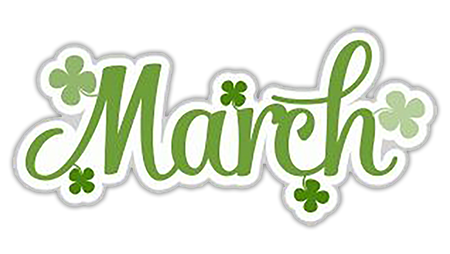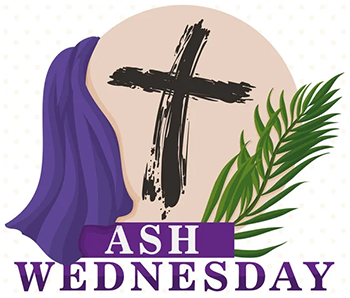A 501 (C) (3) nonprofit organization, (tax-deductible donations) Website www.ccosg.org
Officers:
President: Jerry Downs 941-629-7568 fldowns@embarqmail.com
Vice President: Ken Aukett 609-315-8115
Secretary: Lovelle Meester 612-240-2175
Treasurer: Lorelie Godbout 603-474-9063
Directors: Janice Creutzmann 910-382-2509
David Sandora 941-828-1076
Committees:
Newsletter: Lorelie Godbout
Programs & Education: Jerry Downs,
Gloria Patmore, RNET (retired) 941-627-3077
Nancy Frank, RN, BSN, CWOCN 941-629-5118
Marie Michel, RN, CWCA, CHRN, OMS 941-626-2607
Visitation: Nancy Frank, RN, BSN, CWOCN
Library: Lorelie Godbout, RN (retired)
Professional Advisors:
John P. Rioux, MD, F.A.C.S.
Nancy Frank, RN, BSN, CWOCN
Marie Michel, RN, CWCA, CHRN, OM
Newsletter for March 8, 2022
I hope this finds everyone safe and healthy. This March we have Mardi Gras on the 1st, Ash Wednesday on the 2nd, Daylight Savings Time on the 13th, St. Patrick’s Day on the 17th, and the first day of Spring on March 20th. We have much to celebrate and a time for reflection in getting ready for Spring and Easter. I hope everyone is staying safe and healthy.
Our meeting on February 15, 2022, was held at Golden Corral with 29 people in attendance. President Jerry Downs opened with a blessing and then we ate. Jerry then introduced Jessica Gibson, representative of Coloplast as our speaker.
 Jessica began by introducing herself and how she became involved with Coloplast. She talked about Coloplast Care and how it is a patient support program and helps new ostomates get the support, guidance, and help they need. They help through tough times and can also offer free samples if needed. They also hand out starter kits, which include supplies for the different types of ostomies and educational materials, to new patients in the hospital. The advisors are there to help with any problems that come up and can be reached by calling 1-877-858-2656 or visiting Coloplast website.
Jessica began by introducing herself and how she became involved with Coloplast. She talked about Coloplast Care and how it is a patient support program and helps new ostomates get the support, guidance, and help they need. They help through tough times and can also offer free samples if needed. They also hand out starter kits, which include supplies for the different types of ostomies and educational materials, to new patients in the hospital. The advisors are there to help with any problems that come up and can be reached by calling 1-877-858-2656 or visiting Coloplast website.
She talked about how the brand SenSura Mio was designed to fit individual bodies and is able to stretch so it will form to your shape. Everybody is different. And there are different products for different needs. The Star barrier is designed to fit curves, bulges, and hernias and moves with the body. She passed samples around the room of the different products. She talked about blue stickers that protect the filters in the pouches while taking showers or swimming. She demonstrated how they go over the filter. She also demonstrated how to close the flap on colostomy bags. She discussed the two-piece system with adhesive connection with the barrier and pouch and that you can remove the pouch to reposition if necessary. She also talked about moldable rings that can be used to fill in uneven skin surfaces and protect the skin. It helps keep skin healthy by protecting it from the output and absorbing moisture from the skin. It is easy to handle, mold, and apply. She also mentioned two different types of pastes–strip paste and tube paste.
She discussed how urinary bags have multi chambers to minimize sloshing and wider anti-reflux valves prevent urine from washing over the stomas.
There are two types of pouches–opaque and clear pouches. It is a personal preference.
Educational programs were mentioned for nurses in hospitals and nursing homes. Educational materials and discs were supplied to hospitals and nursing homes, but it is difficult to get the nurses to look at the material, due to time restraints. Coloplast has been working to set up some programs for hospitals and nursing homes.
Jerry mentioned the supply closet we have and it is full. He sorts it out and when it gets overfilled, excess supplies are sent to the East Coast for $3.00 shipping and they get distributed to places that need them. He also mentioned trying new things occasionally to see how they work and learn what works best for you.
Jessica also talked about deodorants, belts, powders, adhesive removers, barrier wipes, and stealth belts. There were discussions from the people attending. Jessica had samples of supplies for anyone who needed to try something.
Everyone seemed to appreciate the time to learn about the products and get questions answered and had a great dinner.
The following articles are from Coloplast Care
Signs of Leakage
How to spot leakage and how it is different from mechanical irritation and other complications. You should never hesitate to consult your ostomy nurse as soon as you experience skin problems or complications. However, spotting signs of leakage early can help you stop a potential skin problem even before it develops.
Start by looking for ostomy output, either on your skin or on the back of the barrier upon removal. Even if there is no direct visual sign of leakage. Be aware of anything unusual, such as if the barrier looks ‘melted’ (because the barrier may have reacted with the output).
Potential Signs of Mechanical Irritation
If your skin is red, sore, and moist, maybe even bleeding a little, but you have not had any leakage, the issue could be ‘mechanical’. That means your skin is potentially being irritated from removing the pouch too often, too vigorously, or from cleaning or scrubbing the skin too roughly.
To avoid mechanical irritation, try to be as gentle as possible, both when removing your barrier and when cleaning the skin. Try to peel the barrier off slowly, rather than ripping or tearing it off. Using a “push-pull” technique can help reduce stress on the skin.
Information from Coloplast Care is for educational purposes only. It is not intended to substitute for professional medical advice and should not be interpreted to contain treatment recommendations. You should rely on the healthcare professional who knows your individual history for personal medical advice and diagnosis.
Guide to Healthy Skin
Apply. Remove. Check. By following this procedure correctly, you will be able to keep the skin around your ostomy healthy most of the time.
Maintaining healthy skin is more than simply checking if you are applying and removing your ostomy pouching system correctly and with the right frequency. The length of time between changes will vary for each individual. Using the following “Apply. Remove. Check” process described here will help ensure you are in the right routine.
Apply
Make sure the skin is clean and dry before applying.
The barrier should fit snugly around your ostomy.
Accessories, such as rings or a paste, can help you achieve a good seal around the stoma.
Ensure that the barrier has made full contact with the skin by applying gentle pressure to the barrier during application – begin in the area closest to the stoma, and then move outwards towards the edges.
Remove
Protect the skin around your stoma by gently removing the ostomy barrier
Pull down on the removal tab to loosen the barrier from the skin
Gently push down on the skin as you pull down on the barrier going side to side to gently release the adhesive from the skin
– This is called the push-pull technique
Observe or Check
Observe the skin underneath the barrier
If necessary, use a mirror to check your skin
Check the back of the barrier
If you see one or more of the following signs, it may be because you need to change your barrier more often:
Erosion of the barrier
Leakage on the barrier or your skin
Irritated, broken, or red skin
ARC Guide. Skin irritation.
Experiencing skin irritation?
If you see any changes in the appearance or color of the skin around your stoma (compared to the skin on the rest of your stomach), you can download our guide to healthy skin in order learn more. If you see a rash or have skin issues, call your ostomy nurse or healthcare provider.
You should rely on the healthcare professional who knows your individual history for personal medical advice and diagnosis.











